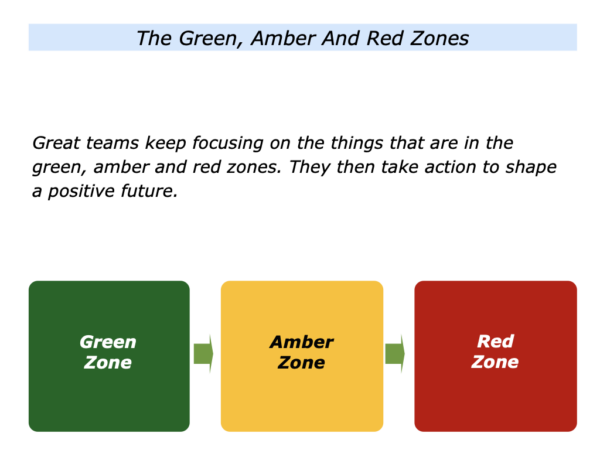
Imagine that you lead a team. People are clear on the team’s purpose, principles and picture of success. They have also made clear contracts about their best contributions towards achieving the goals.
The next step may be for people to keep focusing on how things are progressing towards achieving the picture of success. There are many methods for making this happen.
One company I worked with had a dedicated room where people kept focusing on the picture of success. They also kept doing reality checks regarding the activities that were in the green, amber and red zones. The room had charts that covered the following areas.
The Picture Of Success
People kept referring to the company’s aims that were displayed on one wall. These were grouped in terms of what it wanted to achieve under the Three Ps: profits, products – including customer satisfaction – and people.
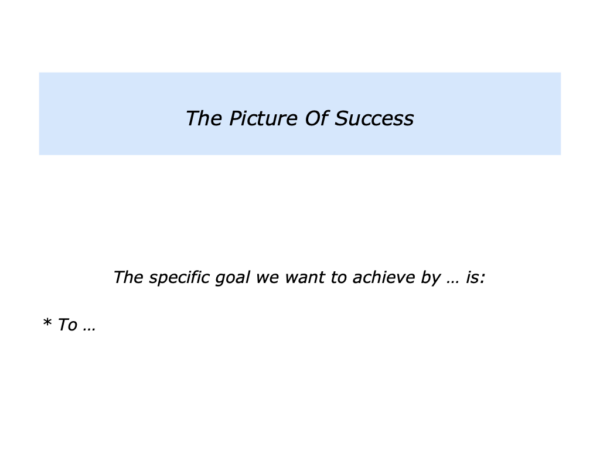
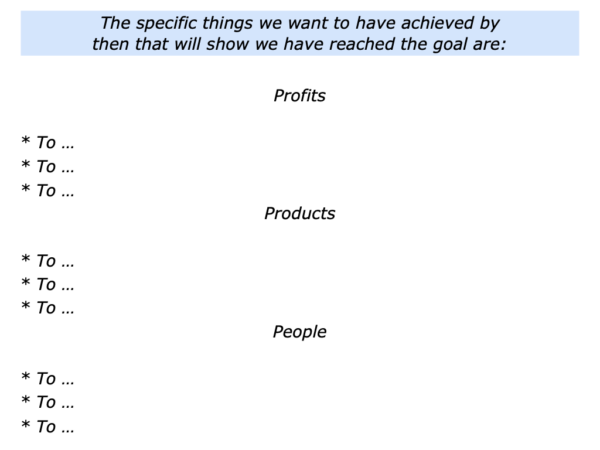
The other walls had the following charts that described the current state of play regarding various activities.
The Green Zone
People listed the things that people in the team were doing well or things that were going well. They also provided concrete suggestions regarding how to maintain or build on these activities.
Great workers build on what is working. If things are going well with a particular customer, for example, they explore how to continue providing great service. This can lead to developing the relationship even further.
People kept adding to the following chart. They then focused on how to implement these ideas in a way that helped the team to achieve its picture of success.
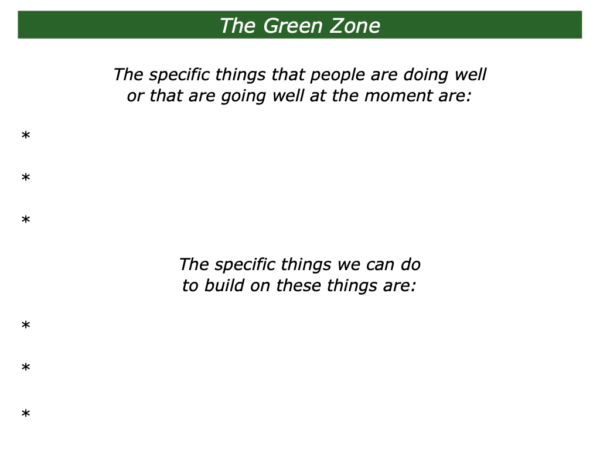
The Amber Zone
People described the things where there were potential warning signs. They also provided suggestions regarding how to improve these activities or situations.
Great workers worry about things that are in the amber zone. They are concerned that, unless these issues are addressed, these may quickly slide into the red zone. So they focus on how to move these activities more towards the green zone.
Bearing this in mind, people clarified any issues that were in the amber zone. They also focused on the specific steps that could be taken to improve these things.
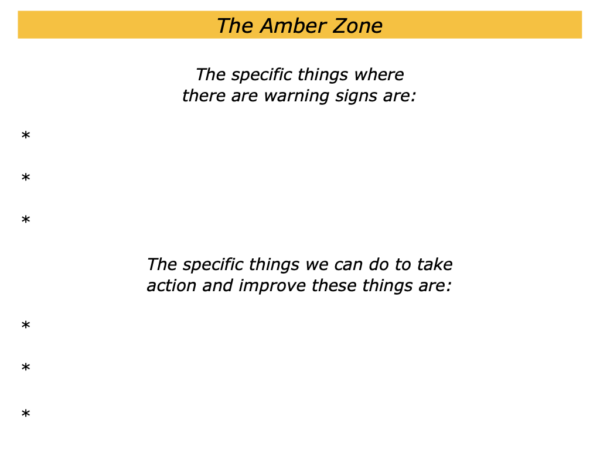
The Red Zone
Great workers think ahead to ensure that things do not slide into the red zone. Crises do occur, however, so it is then vital to find positive solutions. There may be some issues, however, that are continually falling into the red zone. If systems are breaking down, for example, these may well need replacing.
A more challenging issue could be if a particular customer continually makes life difficult. Certainly it is vital to do whatever possible to provide great service but some customers may prove impossible to please.
They may also prove to be a massive drain on resources. In such cases it may mean deciding to move on from the customer. This can be a difficult but necessary decision.
People listed the things that were not going well and gave suggestions regarding how to improve these activities. These could sometimes involve making radical improvements or for taking key decisions.
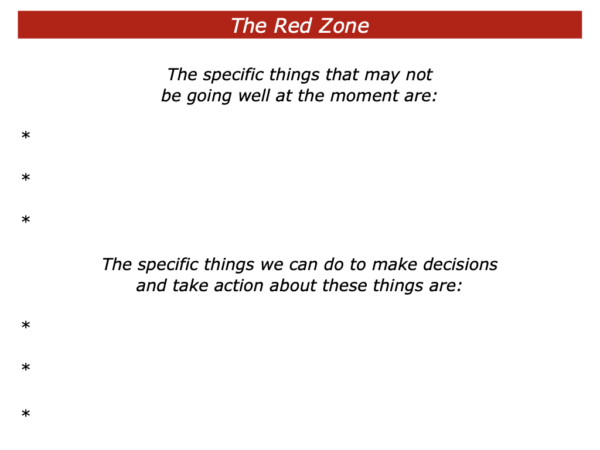
Taking Action
Imagine that in your team people have described things that may be in the green, amber or red zones. Bearing these in mind, it can be time to focus on the specific actions to take.
How can people build on the things that are in the green zone? How can they tackle any issues that may be in the amber zone? How can they make decisions and take action about things that may be in the red zone?
Looking at these actions, how can people get some quick successes? How can they then maintain the momentum? What may be the benefits of taking these steps?
Here is the final exercise that you can use to pull everything together. This involves focusing on the following themes and continuing to work towards achieving the team’s picture of success.
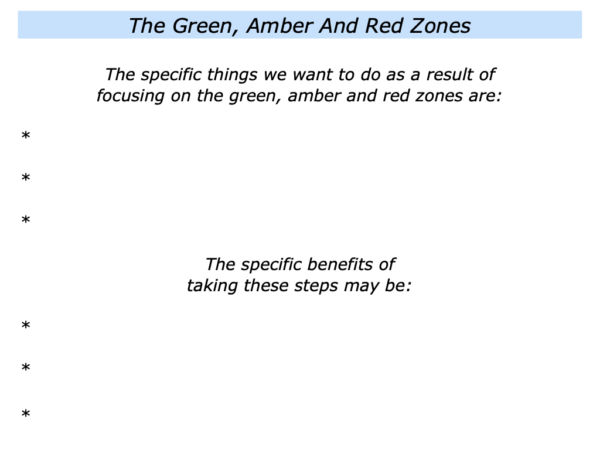






Leave a Reply